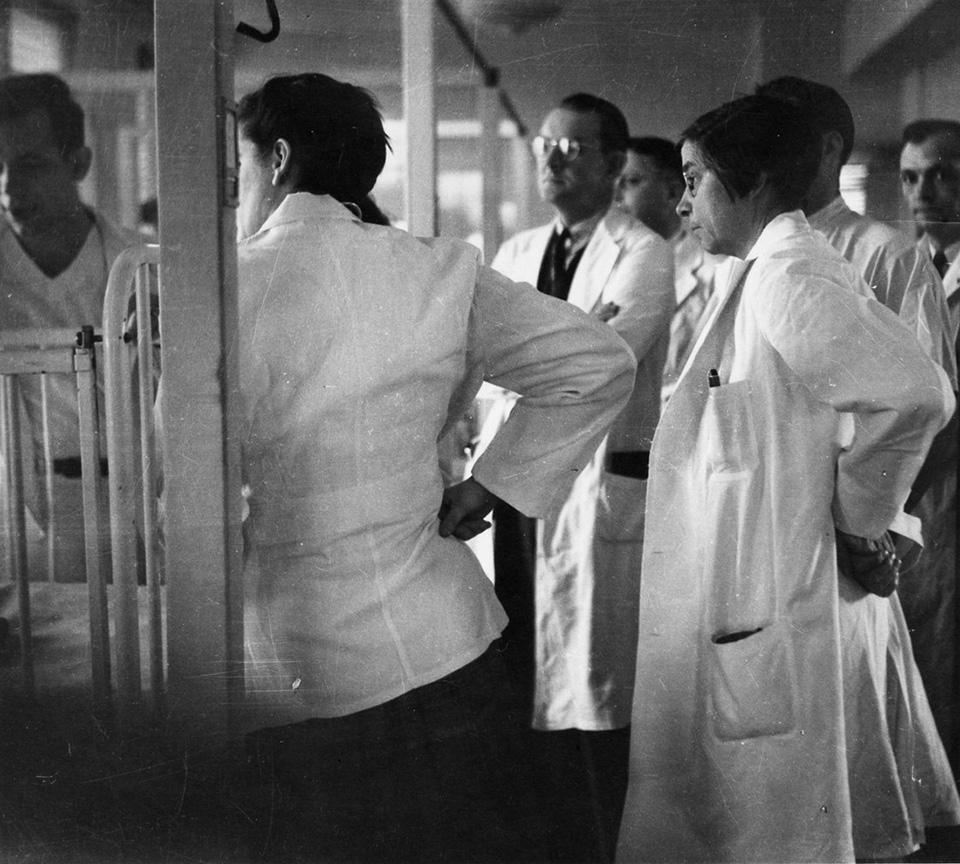
Katie Dodd, MD, was often accompanied on rounds by community pediatricians, as well as residents.
1945
Culture
Katherine (Katie) Dodd, MD, was hospital president Dr. Ashley Weech’s first full-time appointment in 1943. Often cited as the best clinical teacher in the history of Cincinnati Children’s, she went on to become the first woman to Chair a Department of Pediatrics. She left Cincinnati Children’s in 1952 to take the position at the Children’s Hospital of Arkansas.




